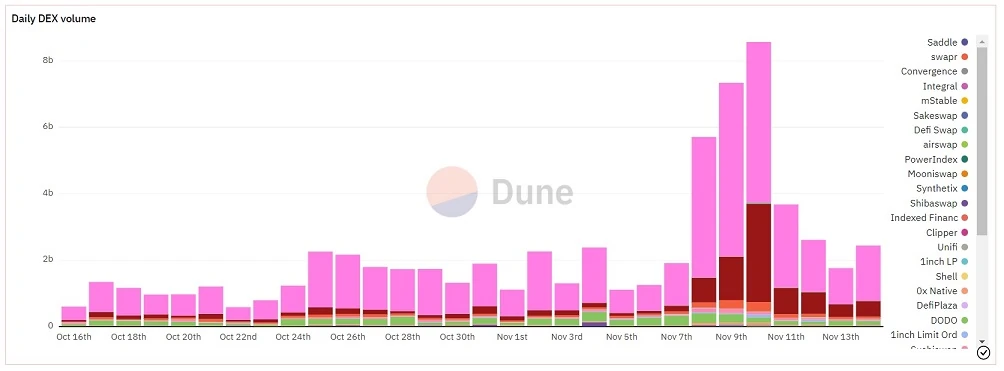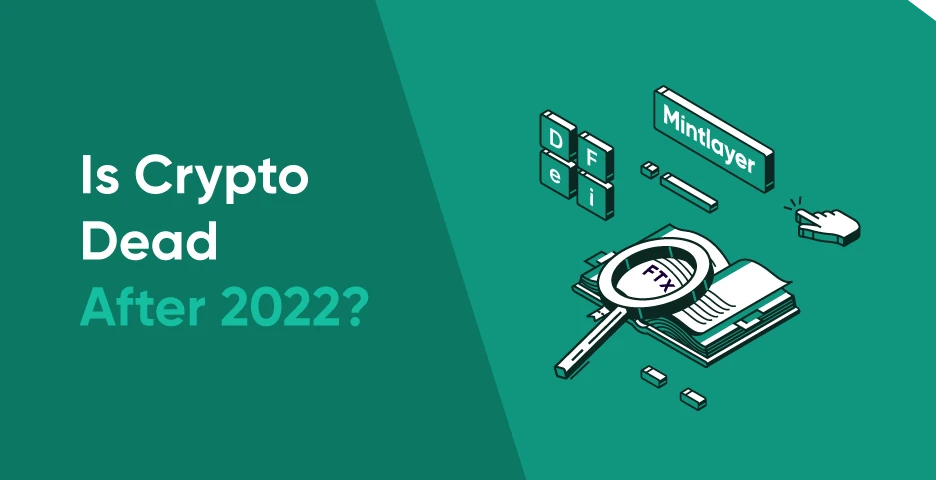Is Crypto dead?
Not your keys, not your crypto. Investors have been haunted by this often repeated phrase since the collapse of Sam Bankman-Fried’s FTX and Alameda Research last week.
FTX is the latest company with a traditional finance business model to file bankruptcy in 2022.

Is Crypto Dead?
Many people are saying that this latest mess, the downfall of the number two cryptocurrency exchange, is a precursor to the final nail in the coffin for crypto. They say that it’s another example of why cryptocurrency is dead.
The truth is, centralized exchanges like FTX embody the complete opposite of cryptocurrency ideology. Sam Bankman-Fried was actively campaigning the US government to increase regulation prior to the collapse.
The concept of transparent distributed accounting underpins Bitcoin and projects such as Mintlayer. Peer-to-peer transactions remove the need for trusting third parties, and each individual controls the security of their personal assets.
Companies like FTX try to insert themselves into the process so they can collect the fees that banks and other financial institutions traditionally would. Mintlayer is building a decentralized network of users that will collect the trading fees themselves, and maintain custody of their assets.
Real crypto isn’t dead; it’s the answer to centralized third-party exchanges like FTX collapsing and taking billions in customer assets down with them. Mintlayer is designed from the ground up to allow users to retain control of their assets.
The Risk With 3rd Parties
For a centralized exchange to function on your behalf, it needs to take custody of your assets. Allowing a third party to manage the custody of your assets introduces multiple layers of counterparty risk.
Introducing a third party immediately increases risk in two ways
- Increased attack surface
- Trusting individual employees
For a finance business to make profit and pay interest, they will also need to do something with your assets (usually loan them to another party in exchange for interest).
To secure these loans, fintech companies will use different types of risk management and ask for over-collateralization.
In the past year we have seen almost every conceivable failure of these risk management systems. Even when the systems work flawlessly, users are still subject to the incompetence and malfeasance of the people that run them.
How Mintlayer DeFi Protects Your Assets
Projects like Mintlayer replace centralized exchanges with systems that allow each user to retain custody of their assets, while engaging in staking, trading, sending and receiving assets through Dapps and wallets.
Self-custody and removing exposure to counterparty risk are at the heart of Bitcoin’s value proposition.
Mintlayer extends those basic premises into a functional DeFi ecosystem that will allow users to actively and passively participate.
Hedge Funds and Big Finance
The web 3.0 ecosystem saw losses of approximately $2.3 Billion in the first three quarters of 2022. This number may seem large, but as of April 2022, there was $160 Billion worth of assets locked in smart contracts, and the market cap of all cryptocurrencies is $842 billion.
The losses in DeFi are almost entirely due to hacks of larger projects such as bridges, and nascent protocols.
Centralized exchanges and hedge funds on the other hand have lost tens of billions of customer assets this year. A few of the larger ones:
- Celsius owes users $4.7 billion after collapse
- FTX is reportedly $8 billion short of covering customers. The associated fortune was recently estimated to be over $25 billion, all of which has vanished
- BlockFi took $400 million from FTX earlier this year to cover liquidity, and has once again paused withdrawals due to their exposure to FTX
- Voyager’s bankruptcy filing this year showed they owed 100,000 creditors $1.3 billion
- 3 Arrows capital owes $3.5 billion to creditors
- Genesis spent the last week trying to secure an additional $1 billion in funding. Their bankruptcy is considered imminent without it.
Collateral Damage
These large bankruptcies ripple out to hundreds of mid-sized and small funds and companies that had exposure to FTX or Alameda Research.
For example, crypto management firm Ikigai, who raised $30 million in capital earlier this year, tweeted that they had a large majority of their assets on FTX, effectively losing everything.
The problem isn’t only that centralized exchanges and fintech companies that require asset custody are inherently vulnerable, but that they repeatedly use outdated financial models and risk management taken from traditional finance to hedge their business operations. Fund managers that are stewards of large amounts of capital ignore basic tenants of cryptocurrency, like “not your keys, not your crypto”.
Besides poor risk management, it’s reported that FTX and Alameda were directly involved in shady accounting practices. Sam Bankman-Fried spent $40 million on campaign donations in 2022 alone. Even if risk management practices were perfect, it seems you just can’t trust other people and organizations with your money.
Initial Reaction to FTX Collapse
If there is any silver lining to the collapse of FTX and the various companies in their orbit, it is that people are moving from CeFi to DeFi.
Trust Wallet Token ($TRT) soared 150% in the week after, even as most crypto related assets saw a downturn.
Volume on the largest DeFi trading platform Uniswap ($UNI) saw volume pass $20 billion in the week after the collapse, becoming the 2nd largest exchange for ETH transactions by volume, temporarily doubling the volume on Coinbase.

Crypto enthusiasts are returning to the fundamentals. Projects like Mintlayer that do not require third party custody are seeing increased interest from the public at large.
Mintlayer will connect Bitcoin participants, which enjoy a strong network effect over the second largest coin by market cap Ethereum, with the components and products of decentralized finance.
This will allow participants to use financial products without compromising the personal custody of their assets.
Killing Crypto? Algorithmic Stablecoins, Wrapped Tokens and Token Bridges
Three novel concepts that companies developed to increase cross-chain compatibility led to the largest DeFi losses in 2022; token bridges, wrapped tokens, and algorithmic stablecoins.
Mintlayer directly addresses all three attack surfaces by removing the need for a token bridge or wrapped $BTC entirely.
- Binance was forced to temporarily pause operations after the largest DeFi exploit of 2022. The target was a bridge built into the Binance Smart Chain.
- Many of the wrapped tokens related to FTX lost their peg this week when FTX announced they were filing bankruptcy.
- After the collapse of Terra (LUNA) earlier this year, their stablecoin TerraUSD, which is supposed to be pegged to the US dollar, is now only worth $0.02.
So not only will Mintlayer be addressing the counterparty risk ingrained into centralized systems like FTX, but we will also be directly addressing the largest attack surfaces inherent to existing DeFi ecosystems.
Mintlayer’s Commitment
Our opinion is that crypto is not dead, it’s just as promising and on the same track as it was prior to FTX.
It is Mintlayer’s commitment to promote decentralization and develop applications that enable self-custody. As long as Dapps that rival centralized applications in terms of usefulness and accessibility are not available, decentralized finance cannot achieve its true potential.
“DeFi is a trust minimizing technology. When code replaces humans, it is incorruptible and takes human error out of the equation as much as possible. We are still early for that, both in terms of regulation and technology, but this is why Mintlayer exists.” - Enrico Rubboli
Crypto is not dead, but maybe some projects that don’t mesh with the ideas cryptocurrency originally espoused are.
From the bottom of our hearts, we are sorry for people that have suffered in 2022 from market fallout. In situations like this, the most vulnerable are always the most affected. For honest employees that are now out of work, Mintlayer is currently hiring and we’d love to have you on the team.
To install Mojito wallet on Android and iOS please click here.
Follow us on socials, and join us in our Telegram community chat to stay up to date with the latest from Mintlayer. For questions, you can reach out to us directly at: support@mintlayer.org


